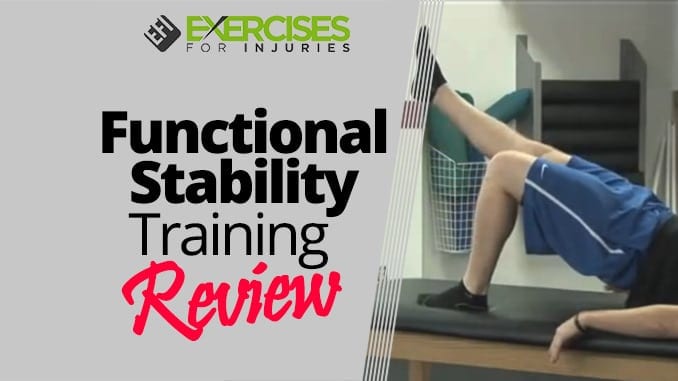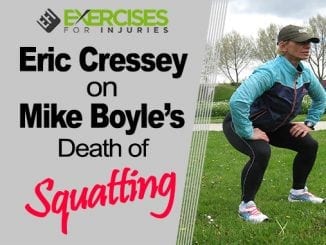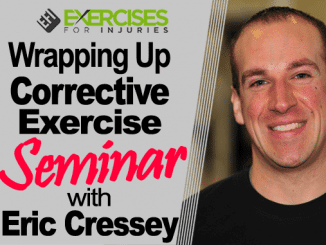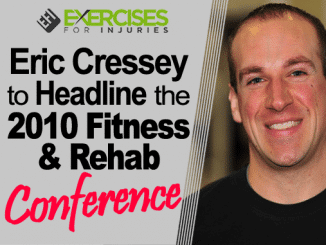
I just got a copy of Functional Stability Training with Eric Cressey and Mike Reinold.
As usual, it was fantastic stuff. Here is a clip from the DVDs:
Rick and His History of Core Stuff
Before I get into the review, let me chat about core stuff.
I was introduced to core stuff in 1997. I worked at a physical therapy clinic, and the physical therapists asked me to do some research. They put an in-service together for them on core stability exercises.
The class was a hit with the physical therapists, leading to me teaching the class at Simon Fraser University.
Over the next four years, this led to building a 16-hour course related to core stability for the rehab client, advanced core stability, and core stability of the shoulder and lower back.
I am always excited to see what new research is out there. And what leaders in the field like Reinold and Eric Cressey have to say about it. I know I am always open to new ideas, and I am always learning. Ultimately, it benefits my clients, those who attend my courses, and myself.
Let me go through the program and highlight a few things I learned.
Module #1 – Introduction to Functional Stability Training (Length – 52:26)
This is where they explain their concept of core training. They describe it as based on numerous disciplines.
Mike started explaining what FST is and how it is based on four components:
- motor control
- proprioception
- dynamic stabilization
- neuromuscular control
Mike also spent a good chunk of time discussing what creates dynamic stability and going through his perspective of the four things that play a role in it. He discussed how dynamic stability was impacted by emotional ligament tension, joint compression, force couples, and neuromuscular control. It was great to hear his perspective and understand how he interprets things.
Few highlights from this module:
- reverse posturing is a big thing we need to focus on with our clients
- isolation training has a vital role in the process of rehab and performance
- how the hips might be the place to start with a lot of things we do as trainers, coaches, and therapists
- muscle imbalances negatively affect the core and need to be addressed
Module #3 – Maintaining a Training Effect Despite Common Spine and Lower Extremity Injuries (Length – 1:00:48)
It was great they took the time to look at some stuff when it related to exercise and injuries:
This is great stuff to see. This module focused on things that I love: injury and exercise. It is excellent to get a strength coach’s perspective and how he keeps getting training results, even if clients are injured.
Eric shared his experience working with 40 people that had spondylolysis. He classified it as the new ACL epidemic in the sports performance world.
Eric went off on a tangent and commented on how many of the injuries that professional athletes have could result from what they did between 10 to 15 years of age. Focusing on competition, less training, and early sports specialization has changed people’s development.
Eric also discussed disc herniations, hockey hips, sports hernias, and exercise considerations. He also touched on anterior femoroacetabular impingement, anterior hip pain, femoral anterior glide syndrome, anterior knee pain, and ankle issues.
A few things that stood out:
- Look at the mechanism of injury and consider that when it comes to the exercise program
Module #6 – Performance Progression Lab & Advanced Stability Lab: Training Outside of Sagittal Plane (Time 56:20)
It was great having Mike go through bridges, bird dogs, side planks, and kneeling rotation exercises. Hearing his cueing and seeing his progressions are things that I will use with my clients.
Mike focused on the lower body, and then Eric came in and started talking about upper body exercises. Eric began with serratus anterior and more inferior trapezius work. Then Eric went into his med ball stuff. This was great. I had never seen many things before, but his program design was more important than just the exercises. I typed out 14 pages of notes full of tiny photos like this:
Enough of my tiny stills. Here is a clip from Eric talking about med training he does with his athletes:
Other Things that I Like about FST:
- I never get tired of listening to the Boston accent. When I read Eric and Mike’s blogs, I make sure I read them in my mind with a Boston accent. It makes it more exciting and easier to remember the material.
- I get a chuckle when coaches bring out their khakis for the camera. Mike and Eric did the same. Nice.
- It is always great to get new cutting for exercises and exercise progressions.
- Eric’s little story about rubber and why there were so many faulty med-balls last year was remarkable.
- It was interesting to hear why Cressey does not spend much time on Olympic lifts with his athletes and spends more time doing medicine ball work.
Okay, let me be honest. I have only gone through 3 of the six modules, but I am thrilled so far. Also, I have learned several exercises, got some great cutting tips and a bunch of progressions, was reminded of a bunch of stuff, and learned a stack of new things.
I will watch the rest next weekend as I have a long flight to Detroit and then off to Windsor to the present. Take care.
Okay, that’s it, have a great day.
Rick Kaselj, MS




